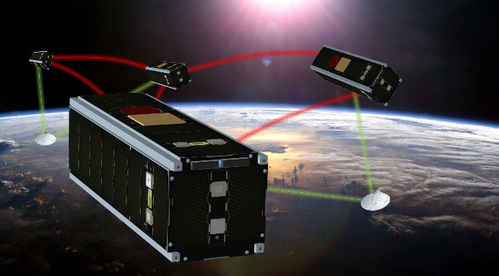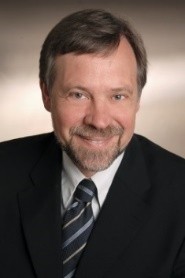The Future in Space :
Smarter, Smaller and More Cooperative Satellites?
Klaus Schilling
Center for Telematics (ZfT), Wuerzburg, Germany
klaus.schilling@telematik-zentrum.de .
Abstract
A paradigm change in spacecraft engineering can currently be observed: traditional multi-functional, large spacecraft are complemented by robust systems of networked, cooperating, distributed very small satellites. In particular in Earth observation innovative technologies are emerging, based on self-organizing sensor networks in orbit.
Similar trends for distributed systems emerged in information systems since 1970, where the large mainframe computers were complemented by today’s smart phones, networked via Internet to form the basis for cloud data distribution. In addition, modern miniaturization technologies support production of robust, cost-efficient small satellites with increasing performance in terms of their control capabilities. The deficits of miniaturization are to be compensated by advanced control, redundancy management and operations software.
Those principles for future multi-satellite systems will be illustrated by examples of current formations of self-organizing nano-satellites as cooperating sensor networks in space taking advantage of multi-perspective views, in particular for application fields in Earth observation. Here the specific example mission CloudCT, composed of 10 small satellites coordinated by networked control to characterize the interior of clouds by computed tomography methods will be discussed in more detail.

Biography

Prof. Dr. Schilling had in space industry responsibility in Earth observation and interplanetary satellites (such as HUYGENS to the Saturnian moon Titan and ROSETTA for exploration of comets, before he was appointed professor and chair for Robotics and Telematics at University Würzburg. In parallel he is president of the research company „Center for Telematics (ZfT)“. His team built the first German pico-satellite UWE-1, launched 2005 to optimize Internet in space. He published more than 400 papers and received several awards, including the Walter-Reis-Award for Robotic Innovations 2008 (for research in mobile robotics) and 2012 (for medical robotics), an ERC Advanced Grant 2012 for research on control of networked distributed satellite systems and an ERC Synergy Grant 2018 for “CloudCT” to improve climate models by observations from a formation of 10 small satellites. He was awarded with the Eugen-Sänger-Medal 2021, the Global AACII Award in 2022, the Malina-medal 2023 of the International Astronautical Federation IAF for his contributions to technology progress in small satellite area. He is full member of the International Academy of Astronautics and was Consulting Professor at Stanford University 2002-2006.






